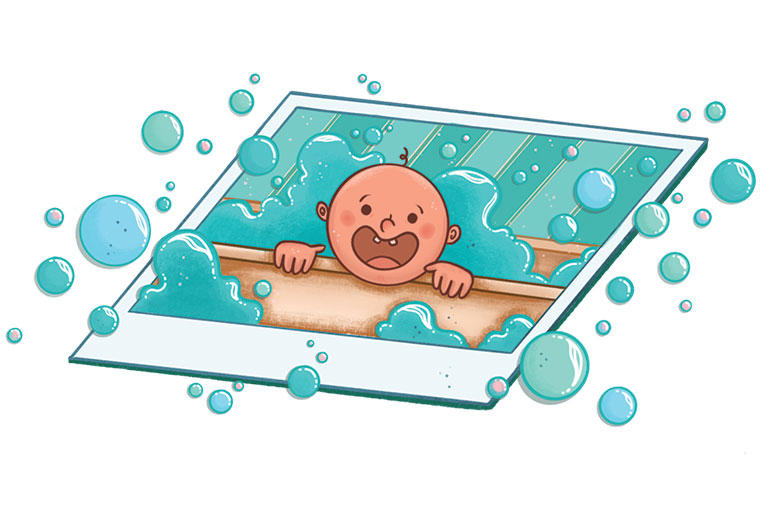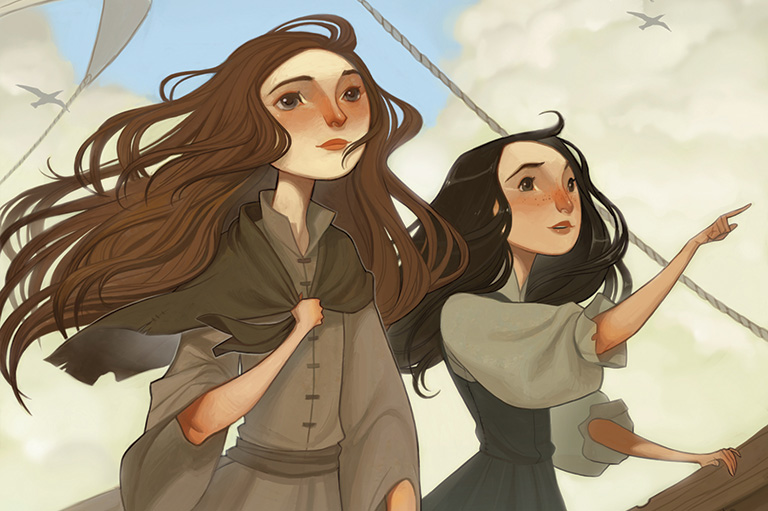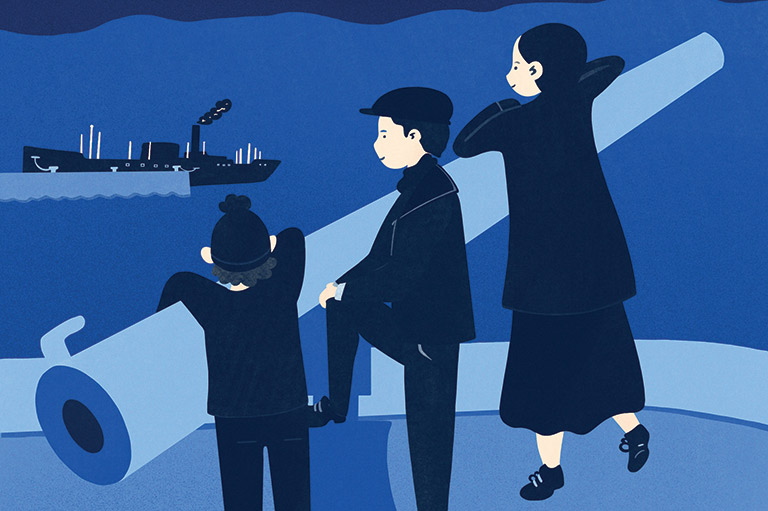No Ad-Vantage
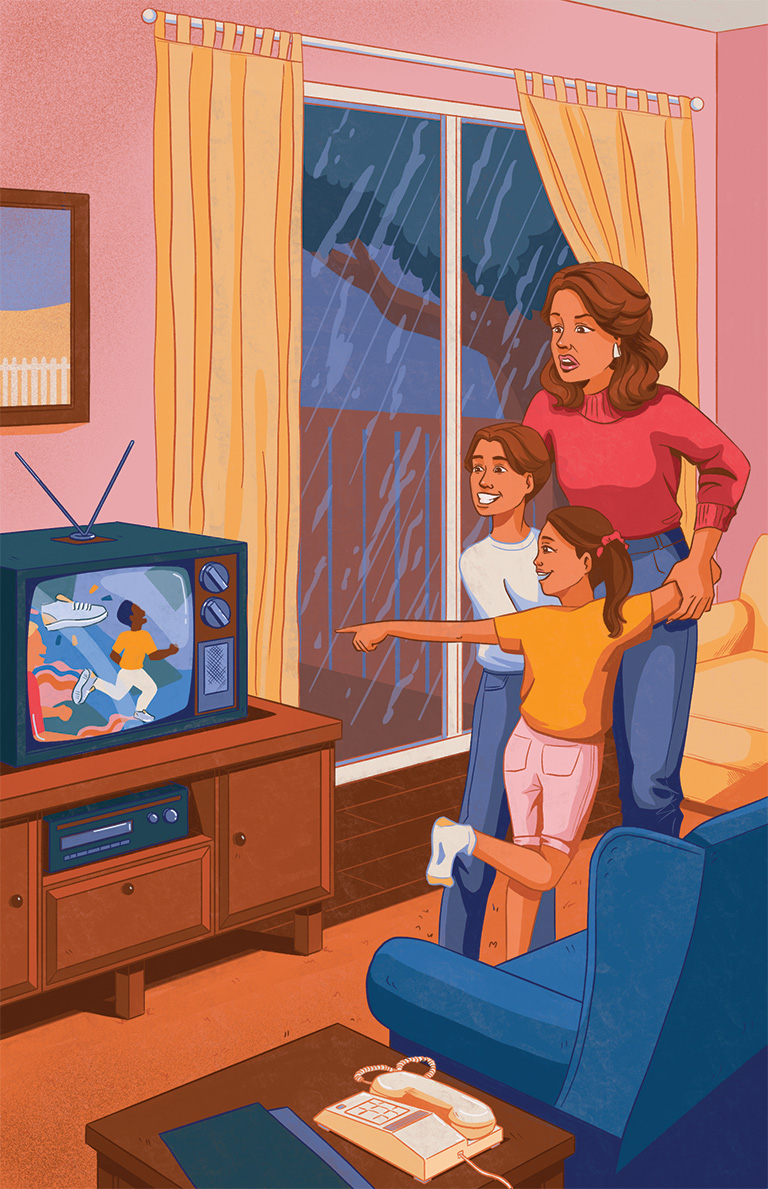
Trois-Rivières, Quebec, July 1980
The rain drizzled down the windows outside, but inside the living room was cozy. On the TV, kids were racing around a playground, with animated puffs of bright smoke trailing behind them. “Kids, get SuperZaps in every colour of the rainbow!” the announcer’s voice urged. “You’ll run faster than ever!”
Little Sylvie’s eyes shone. “I’m going to ask for a sparkly green pair.” She was only six, but she could tell from the ad that she needed those shoes. “And then I’ll race everybody and win!”
Her big brother rolled his eyes. “They’re not magic.” Almost to himself he said, “But I still want a red pair. Or maybe yellow. The guys will be so jealous!”
The show started up again just as their mother came in from the garden. “What’s Bobino up to this time?” she asked with a smile. She almost fell over as the kids launched themselves at her.
“Can I get red SuperZaps?” Paul asked.
“I want green ones. Sparkly green ones!” Sylvie shouted.
“I just came in to get some water,” their mother said, trying to loosen Sylvie’s arms, which were locked around her waist. “What’s a SuperZap?”
As if waiting for the right moment, the commercials started again, and sure enough, there were the kids on the playground in their fancy running shoes. “See?” Sylvie pleaded. “They make you run so fast they have airplane jet stuff coming out the back.”
Their mother frowned. “They most definitely do not,” she said firmly.
“She’s little,” Paul said. “I know they’re shoes.” He paused. “But they’re pretty cool. Do you…”
He trailed off as he saw the look darkening his mother’s face.
“First of all, you already have perfectly good shoes.” She picked up the telephone book and started leafing through the pages with government phone numbers. “And second, somebody’s getting an earful from me. I thought it was illegal to advertise to kids your age.”
As the puppet Bobinette tried to explain something on the TV, Paul and Sylvie looked at each other sadly. “So, no SuperZaps?”
But their mother wasn’t listening. “I’d like to make a complaint about advertising to children, please.”
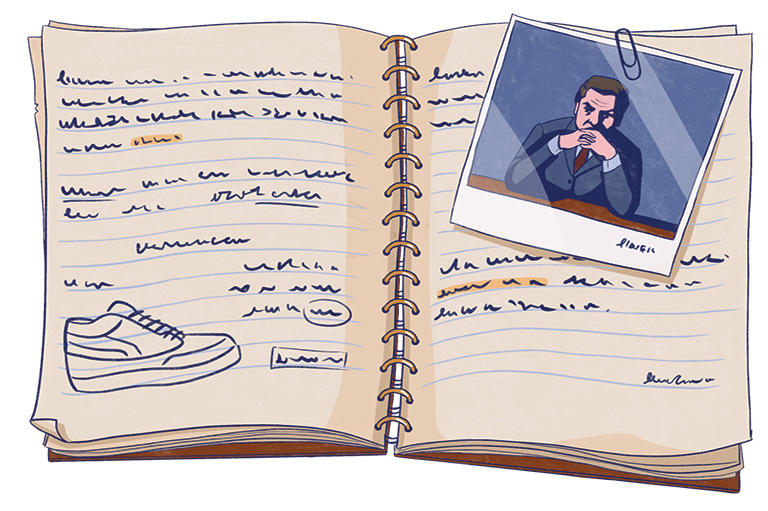
Toronto, Ontario, April 1989
“Who do those judges think they are? Telling me how to run my own company — it’s outrageous!” The young journalist had never seen anyone as angry as the company president she was trying to interview. He’d been yelling and waving his arms for 20 straight minutes.
When the phone rang, Louise hoped the rant might stop for a moment, but no such luck. “If we can’t advertise to kids in Quebec, how are we supposed to sell kids’ shoes in Quebec?” the businessman blustered to the caller. “But it’s the Supreme Court of Canada. What else can we do?” He slammed down the phone.
“Mr. White, I believe the court said you could still advertise the shoes, just to adults,” Louise began.
The man was off again. “That doesn’t help my company at all! We want to get kids excited. Parents don’t get excited. They’re boring. They just talk about how expensive everything is and how the shoes the kids already have are just fine.”
Louise tried a different angle.
“What did you think when the judge said he didn’t agree that your business would be harmed if you weren’t able to advertise to kids under 13?”
Mr. White shook his head. “I’d like to see him sitting in my chair, trying to make a profit and keep all these people working. It’s like kids have all the rights and I don’t have any! If Quebec has a consumer protection act, why doesn’t it have a business protection act?”
He was getting worked up again.
“I mean, what about my freedom of speech? It says here in black and white that Quebec’s silly law infringed on my company’s freedom of expression.” He smacked a thick pile of paper on his desk. “Why don’t you put that in your article?”
He glared at Louise, who realized he expected an answer. “Well, it’s just . . . the judges also said that was okay. To protect kids. Limiting how you could advertise, I mean. Because little kids don’t know what’s real.”
The president stood up stiffly and pointed to the door. “If you’re against SuperZaps too, then this interview is over. Forget the story.”
Louise put her pen and notebook away. The interview was over, yes, but she had a feeling the story was just getting started.

We made up all the people and everything that happened in this story. (Except for Bobino, who was a character on a real show named after him!) But the general idea is based on an important case related to the Charter of Rights and Freedoms.
Quebec’s Consumer Protection Act says companies can’t direct their ads at children under 13. In 1980, a Toronto-based company called Irwin Toy decided to test its luck and made a bunch of TV ads aimed straight at kids. The province took the company to court. As the case worked its way up the system, the Charter came into being in 1982. So, Irwin Toy used the new Charter to argue that Quebec’s rules unfairly limited the company’s freedom of expression.
Eventually the case ended up at the Supreme Court of Canada. The judges used the Oakes test we talked about on page 15 of this issue to see if that limit was reasonable. Three agreed with the company, but said it was okay for Quebec to limit Irwin’s freedom of speech. That’s because the law was there to protect kids who couldn’t necessarily tell what was true or whether an ad was actually part of the show they were watching. (Two judges disagreed, saying there wasn’t enough proof that kids would be harmed, and that free speech was too important to limit.) The case was one of the first to test how the Charter applied to freedom of expression.
Over the years, the Supreme Court of Canada has limited people’s right to express themselves as little as possible. But its judges have also been clear that freedom of expression can’t be used to get away with encouraging violence, hatred or harm to others.
Themes associated with this article
You might also like...
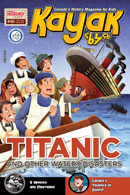
Canada’s History Archive features both English and French versions of Kayak: Canada’s History Magazine for Kids.
Kayak: Canada’s History Magazine for Kids — 3 digital issues per year for as low as $13.99. Tariff-exempt!

